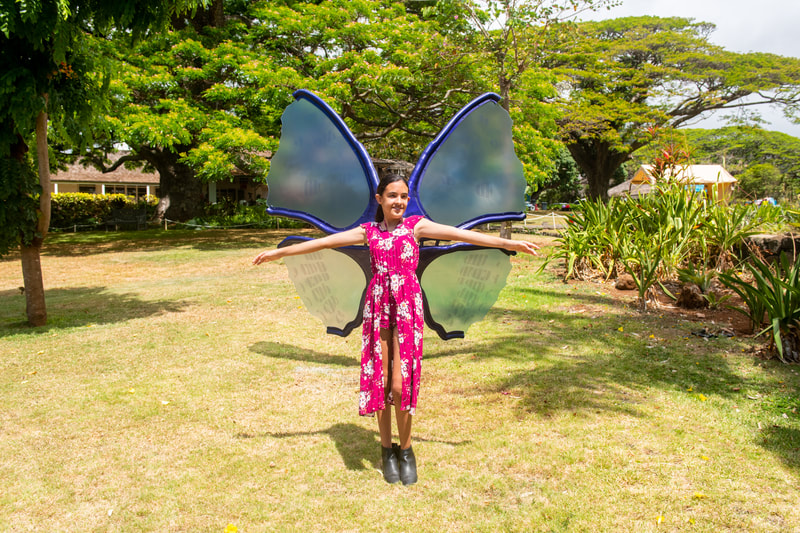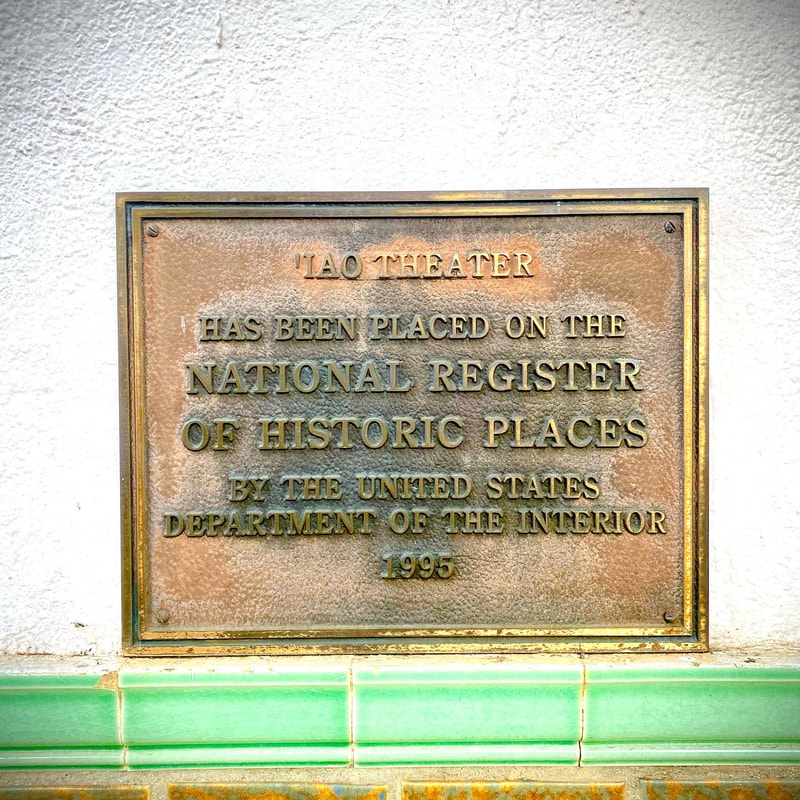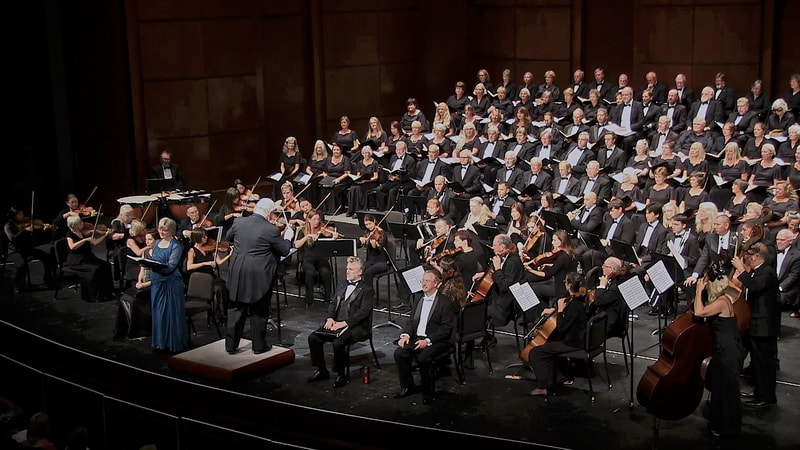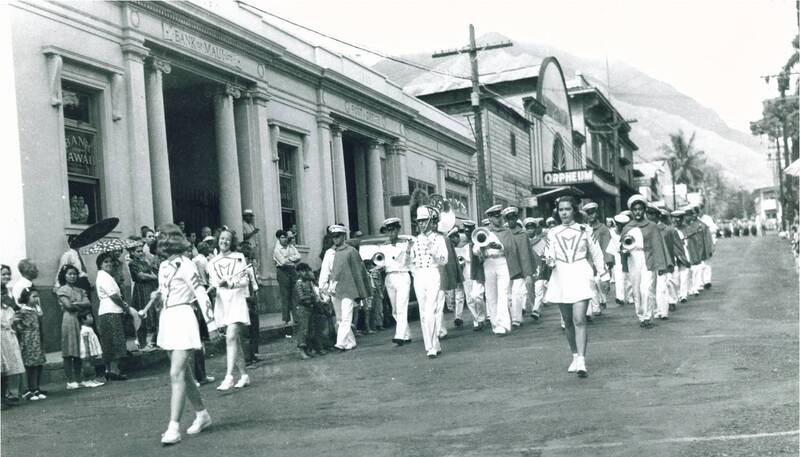Anyone walking around Wailuku Town can sense it—the creative hum in the streets. It’s evident in the giant murals of octopus and ‘ōhi‘a blossoms stretching several stories high above Main Street. It’s present in the young ballerinas arriving for class at the Maui Academy of Performing Arts and in the hula drums reverberating from Hale Hō‘ikeʻike at the Bailey House Museum.
This town is abuzz with art and culture, and that’s no accident. It’s the culmination of decades of grassroots efforts by people who love art and love Wailuku. Now the community wants to make it official. SMALL TOWN * BIG ART is leading a movement to formally designate Wailuku as Maui County’s official “Arts District.”
What is an Arts District?
An Arts District is a small, defined locale—typically a neighborhood, waterfront, or industrial area—with a concentration of art galleries, performance venues, public spaces, and businesses that support the Arts. Arts Districts can emerge spontaneously out of the efforts of resident artists, but more often they are the result of public policy initiatives designed to revitalize a once robust urban area that has lost some of its shine.
Arts Districts exist in cities and communities across the United States—such as the Pearl District in Portland, Oregon, the RiNo Art District in Denver, Colorado, and “The District” in Nashville, Tennessee. There is no standard model; each Arts District is unique, reflecting its specific cultural identity, environment, and history of land use.
Why Wailuku?
Wailuku has long been a place of power and convergence. At the base of the West Maui Mountains, nestled against the dramatic peaks and valleys of Mauna Kahalawai, it is the site of royal births and battles. It is fed by nourishing rains and the fresh water of Wailuku River that flows from mauka to makai, from the mountains to the sea.
Wailuku has been a significant population center since the reigns of Pi‘ilani and Kahekili in the 1700s—and likely long before. In 1905 it was named Maui County’s seat of government. By the late 1960s island business had largely migrated away from Wailuku, but the town’s rich history is preserved in its architecture: an eclectic mix of Art Deco, Colonial, Plantation, Asian and Hawaiian style buildings set against the panoramic backdrop of ‘Īao Valley and the Pacific Ocean.
Just as fresh water flows through this land, so does creativity. Culture and the Arts have always been part of Wailuku’s landscape, bubbling up to nourish and revive local residents and visitors.
The performing arts in particular have proven to be staples of the community. Maui Community Theater (now known as MauiOnStage) helped preserve the historic ‘Īao Theater from demolition. In 1993 Maui County purchased the building, which was then listed on the Hawaiʻi Register of Historic Places. Today ‘Īao Theater serves as the home of Maui OnStage, Maui Chamber Orchestra, Maui Choral Arts Association, Maui Pops Orchestra, and Maui Youth Philharmonic Orchestra. The Maui Academy of Performing Arts (MAPA) did its part to preserve historic architecture as well. In 1998 MAPA purchased 2027 Main Street—the old National Dollar Store—followed by two additional buildings across the street in 2016. In 2017, Maui’s primary music, dance and theater organizations united under the umbrella of the Wailuku Performing Arts Alliance.
The following year SMALL TOWN * BIG ART erupted on the scene. This creative placemaking program transformed Wailuku into a world-class open-air art gallery with dozens of murals, sculptures, and live performance. More than simple street art, each ST*BA piece is rooted in indigenous history and culture.
The success of ST*BA spread beyond Wailuku into neighboring Kahului, across the channel to Lana‘i City, and as far as the uninhabited island of Kaho‘olawe. To serve this larger demographic, the ST*BA team created the Maui Public Art Corps. This new nonprofit has two additional goals: to establish a countywide “percent for art” program and to pursue formal designation of the “Wailuku Arts District.”
Existing Assets
Unofficially, Wailuku already is an Arts District. It claims the highest concentration of working artists in Maui County.
A map of the area’s assets reveals a vibrant assortment of art-centric organizations. The oldest of these is the Bailey House Museum, featuring nineteenth-century landscapes by the missionary Edward Bailey and an impressive collection of Hawaiian antiques and artifacts.
In addition to historic Wailuku landmarks such as the Bailey House and ‘Īao Theater, numerous galleries and art shops exist around the nexus of Main and Market Streets: Paradise Now, Sabado Studios, Fresh Island Art, Request Music, Sandell Artworks, Native Intelligence, and Friends & Faire—to name only a few.
People come from across the island to Wailuku First Friday, a monthly street festival with live music, food, and local vendors. Maui Chamber Orchestra regularly offers concerts at ‘Īao Theater, employing between thirty-five and forty-five orchestra players, plus additional guest artists. Between 2014 and 2019, MAPA impacted an average 35,000 people per year with its creative programming and instruction. Prior to the COVID-19 pandemic, an average of 1,500 dance students attended class at the academy every week.
Wailuku’s creative community continues to grow. Over the past ten years, art space usage in Wailuku has increased by 27 percent. Since SMALL TOWN* BIG ART debuted its first public art installation in 2019, it has collaborated with 127 organizations and directly engaged with 15,000 community members each year. They have additionally developed walking tours to showcase the numerous public art pieces and historical landmarks throughout town.
Most recently, Maui County officials approved the creation of Hālau of ʻŌiwi Art—a groundbreaking Hawaiian cultural center in the early stages of planning by Maui’s most respected kumu hula.
How Will an Arts District benefit the Arts?
Wailuku’s creative entrepreneurs can all benefit from the town’s formal recognition as an Arts District. Independent arts organizations tend to have limited time and resources, which they focus on razor-sharp missions and strategic plans to thrive. Working together, they can create and access new resources and strengthen their overall impact.
An Art District can:
- Serve as a magnet attracting new artists and patrons.
- Provide strategic support, assistance with marketing and fundraising.
- Employ a point person to coordinate a central calendar and information hub.
- Tackle neighborhood-scale infrastructure issues such as property development, parking, landscaping, sidewalk repair, signage, lighting, and public safety.
- Create new opportunities for collaboration.
The last item on the list is the biggie for MAPA executive director Carolyn Wright. “We’re really excited to collaborate with the artists who will be attracted to the Art District—from performing artists, to visual artists, to cultural practitioners,” says Wright. “We believe that the Arts are all about breaking down barriers between people. The Arts enrich us as individuals. They tap us into those traits that, that just make us better citizens, like empathy and creativity and communication and collaboration.”
Wright recalls an example of a past collaboration between a MAPA dance troupe and a local hula halau. “They explored the intersection between ballet and hula,” Wright says. “Independently we each have our ideas about what hula is and what ballet is, but looking at them together, you could really see them as foils to each other because they’re so different, and as complements to one another.”
“This idea of artistic collaboration—exploring together to help see our community in a different light—that’s something I’m really excited about.”
How Does an Arts District benefit the Economy?
Business and property owners benefit from the same things that fuel the arts: an increase in customer traffic, coordinated marketing campaigns, and strategic administrative support.
“The Arts District will revitalize the Wailuku area,” says Kahulu Maluo-Pearson, Hawaiian cultural advisor and Director of Operations of Ka‘ehu. “Right now, you drive through town after six or seven o’clock, and it’s dark. I’ve visited Arts Districts in the continental U.S. and they are always lively.”
Carolyn Wright remembers when MAPA moved into 2027 Main Street in the late ‘90s. “Back then Wailuku is pretty rundown,” she says. “There weren’t that many places to go before or after class. So parents would come, drop their kids off for a class, and then sit in their car for an hour.”
Recently she popped into Giannoto’s Pizza for a snack during a MAPA performance. The owner asked what was happening that night and told her that the pizzeria sees a big bump in business during performances. “We read about the economic benefits to other neighboring businesses, but there it was right in my face!” says Wright. “I just loved it.”
“The more arts we have, and the stronger we can develop the creative arts cluster, the better things are in terms of diversification for Maui’s economy, to help build the resilience that we need to withstand another economic disruption. So just from an economic perspective, it’s great for the whole island. It benefits not only Wailuku, but the whole island of Maui.”
How Does an Arts District benefit the Community?
With the formation of an Arts District, Wailuku can expect to see an increase in public events, cultural tours, holiday celebrations, farmer’s markets, and streamlined transportation options.
Art is more than just an economic engine. It brings people together, strengthens social ties, teaches new skills, offers safe spaces for after school activities, and help cultivate emotional intelligence. These are needs—not wants—for healthy communities.
Other benefits include:
- Greater sense of belonging and pride in community.
- Increased neighborhood cultural diversity.
- Reduction in neighborhood crime and delinquency in at-risk youth.
“I’m excited to see a multicultural group of people sharing space, sharing different arts,” says Maluo-Pearson. “You know, just seeing the community come out in numbers, to celebrate different cultural events—that’s what I’m looking forward to.”
Progress Toward the Goal
The Wailuku Arts District (WAD) advisory committee is made up of representatives from the small business, performing arts, and Hawaiian communities:
- Sissy Lake-Farm, Hale Hōʻikeʻike at the Bailey House / Maui Historical Society
- Kahulu Maluo-Pearson, KAʻEHU and Hālau of ʻŌiwi Art
- Kelly McHugh-White, Little Rhinoceros LLC and Maui Public Art Corps
- John Rowehl, Maui Chamber Orchestra and Maui Choral Arts Association
- Jaclynn Sabado-Eitel, Paradise Now
- Carolyn Wright, Maui Academy of Performing Arts
Since its inception, the team has been busy. They mapped Wailuku’s existing arts assets, created the Wailuku Arts District website and management plan, conducted market research, and met with councilmembers. They hosted twenty-two Wailuku arts partners on Da Bee for a huakaʻi. As the bus traveled from stop to stop, the partners each presented their missions, facilities, and needs.
Among the WAD committee’s biggest accomplishments was surveying 500 Maui residents. A situational analysis identified the proposed Wailuku Arts District’s strengths, weaknesses, opportunities and threats. Specific recommendations emerged—such as expanding First Friday (“make every day First Friday”) and developing a “Signature” annual Wailuku event. The stated values and goals include observing the community’s kuleana (responsibility) to Wailuku and ensuring the Arts District is an inclusive place for everyone.
The WAD committee conducted extensive research to understand how partnerships of this nature have been successfully codified nationwide. They reviewed city and county codes for twenty different municipalities, identifying six with the most relevant codes: Memphis, TN; Toronto, ON; Seattle, WA; Portland, OR; Philadelphia, PA; and Fredericksburg, VA.
Next on the list is delivering the Wailuku Arts District Management Plan to the County of Maui for approval.
“As long as we stay true to the work that we’ve indicated from the very beginning, and invite in additional people who love Wailuku, we are able to represent Wailuku,” says Sissy Lake-Farm. “Where we are from is magical. All we want to do is continue to share with people the beauties of our Wailuku, Maui, and beyond.”
With the establishment of Wailuku Arts District, the world will discover that this “small town with a big heart” truly is “the place where art and culture lives.”










 RSS Feed
RSS Feed